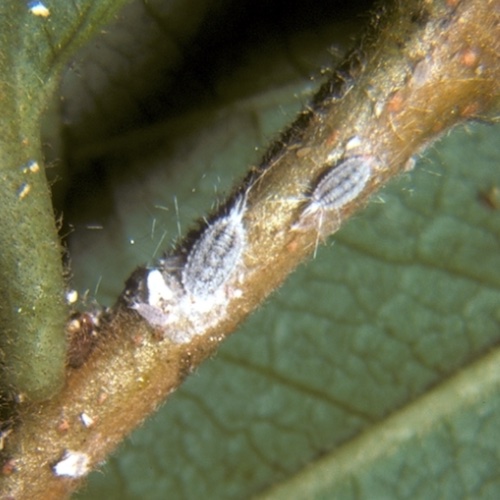
Knowledge Hub
Ferrisia virgata (Mealybug)
Symptom
- Harmful parts: buds, fruits, young buds, underside of leaves. These parts can not grow, become dry, fall off
- Secretion of sweet nectar causes soot fungus to grow, affecting photosynthesis
- Sucking underground stems and roots, making a wound for the fungus to enter and rot the roots. When it's heavy, there are usually big galls
Distribution
- Young bugs move very quickly. The larger bug, the slower it moves
- Mealy bugs secrete wastes that serves as food for many ants to spread pests
- Mealy bugs are also spread through rainwater, irrigation water, and working tools
Prevention and Control
Cultural Control and Sanitary Methods
At the beginning of a local outbreak, severely infested branches should be cut and burnt immediately (Schmutterer, 1969). Mealybugs can walk from one canopy to another when they are touching, so pruning can prevent spread of an infestation.Biological Control
Noyes (2016) provides a list of known hymenopteran parasitoids of F. virgata. In Egypt, three species of Coccinellidae, two species of Neuroptera and three parasitoid wasp species (Leptomastix sp. and two species of Tetrastichus) were reported attacking F. virgata (Awadallah et al., 1979). In India, a coccinellid predator (Scymnus sp.) has been reported attacking F. virgata, controlling a population kept in culture (Ghose and Paul, 1972); also, the predatory caterpillar of Spalgis epius has been recorded feeding on the mealybugs (Chako and Bhat, 1976).According to Zimmerman (1948), F. virgata was first recorded in the Hawaiian Islands in 1898 but was a widespread and common pest in the islands long before this. It is no longer common there as it has been controlled by the coccinellids Cryptolaemus montrouzieri, Olla v-nigrum and Azya luteipes, together with the syrphid Alloagrapta obliqua.
Pesticide-resistant populations of F. virgata were effectively controlled in guava orchards in India by the release of C. montrouzieri. The local natural enemies Aenasius advena (an encyrtid parasitoid) and Scymnus coccivora (a cocinellid predator) also helped control the mealybugs (Mani et al., 1990).Bartlett (1978) gave an account of the introduced parasitoids and predators used to control F. virgata.
Search
Activities
Downloads
© 2024 Safer Spice. All rights reserved.

 BACKGROUND
BACKGROUND




